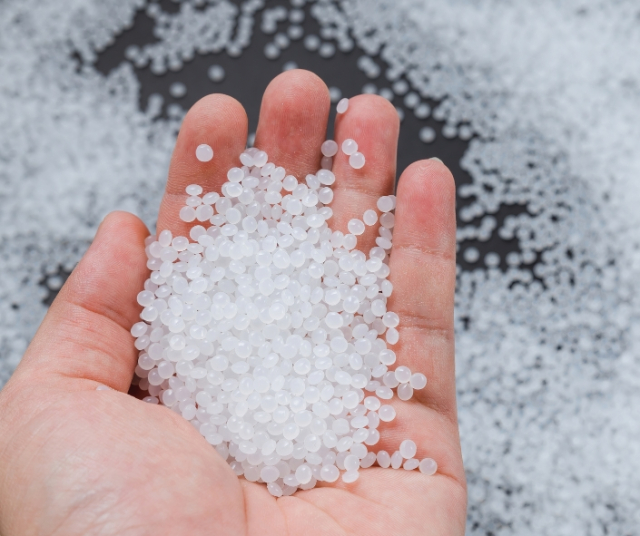In a world that is constantly seeking sustainable solutions to its environmental problems, biopolymers are emerging as a promising alternative in the materials industry. These bio-based polymers are revolutionizing the way we produce and use plastics and other materials, offering a number of advantages in terms of sustainability, biodegradability and reduced carbon footprint.
What are Biopolymers?
Biopolymers are polymers of biological origin, that is, they are mainly composed of natural biomolecules such as carbohydrates, proteins and lipids. Unlike conventional synthetic polymers, which are derived from petroleum, biopolymers are obtained from renewable sources, such as plants, algae and microorganisms. This fundamental characteristic makes them highly sustainable and attractive in the current context of climate change and concern about plastic pollution.
Biopolymers can be classified into three main categories:
Polysaccharides: They are composed mainly of sugars and are found in abundance in nature. Examples of polysaccharides include starch, cellulose and chitosan. Starch, for example, is commonly obtained from crops such as corn and potatoes, and is used in a wide range of applications, from biodegradable packaging to construction materials.
Proteins: Protein-based biopolymers are derived from sources such as soy, wheat and milk. Zein, a corn protein, is used in the manufacture of biodegradable films and edible food coatings.
Nucleic acids and polyhydroxyalkanoates (PHA): These biopolymers are less common but equally important. PHAs, for example, are microbial polyesters produced by bacteria from renewable carbon sources, and are used in the manufacture of biodegradable plastics.
Biopolymer Production
The production of biopolymers involves the extraction or fermentation of biological raw materials to obtain the necessary monomers, which are then polymerized to form the final biopolymer. Key steps in biopolymer production include:
Obtaining Raw Materials: Renewable sources of biomolecules, such as plants, microorganisms or proteins, are collected or cultivated.
Extraction or Fermentation: In the case of polysaccharides, they are extracted from plants or produced through microbial fermentation. Proteins are extracted and purified from plant or animal sources, and the They are produced through the fermentation of bacteria.
Polymerization: Monomers undergo polymerization reactions to form long, stable chains.
Processing: The resulting biopolymers can be processed in various ways, such as extrusion, injection molding or 3D printing, to obtain final products.
Applications of Biopolymers
Biopolymers are gaining ground in a wide range of applications, gradually replacing traditional plastics and other unsustainable materials. Some of the most notable applications include:
Packaging: Biodegradable packaging is one of the best-known applications of biopolymers. Starch and polylactic acid (PLA) are commonly used to make food and beverage packaging. These containers are strong, transparent and completely biodegradable, making them an attractive alternative to conventional plastic packaging.
Agriculture: In agriculture, biopolymers are used in the manufacture of biodegradable films and coatings that protect crops from pests and diseases. These materials decompose safely in the soil, reducing environmental pollution.
Medicine: In the field of medicine, biopolymers play a crucial role in the manufacturing of medical devices, such as sutures, stents, and scaffolds for tissue engineering. Their biocompatibility and controlled degradative capacity make them ideal for medical applications.
Textiles: Biopolymers are also used in the textile industry to make sustainable fibers. For example, biodegradable high-density polyethylene (HDPE) has been used in the production of clothing and other textiles.
Construction: In construction, biopolymers are used in the manufacture of sustainable building materials, such as coconut fiber boards and cellulose-reinforced gypsum boards. These materials are light, resistant and biodegradable.
Energy: Biopolymers also have applications in the production of bioplastics used in the manufacture of solar cells and batteries, contributing to sustainable energy production.
Advantages of Biopolymers
The growing popularity of biopolymers is due to a number of significant advantages they offer compared to traditional materials:
1. Sustainability
Biopolymers are derived from renewable sources, reducing dependence on fossil fuels and deforestation. In addition, their production usually requires less energy compared to conventional plastics.
2. Biodegradability
Many biopolymers are biodegradable, meaning they break down naturally in the environment, preventing the buildup of plastic waste.
3. Carbon Footprint Reduction
The production of biopolymers tends to generate fewer carbon emissions compared to traditional plastics, thus contributing to the mitigation of climate change.
4. Versatility
Biopolymers are versatile and can be adapted to a wide range of applications, from packaging to medical devices and construction materials.
5. Improvement of Brand Image
The use of biopolymers can improve the brand image of companies by demonstrating their commitment to sustainability and environmental responsibility.
Challenges and Limitations
Despite their advantages, biopolymers also face challenges and limitations:
Costs
In general, biopolymers tend to be more expensive to produce compared to conventional plastics. This is due to the complexity of its production and the limited availability of raw materials.
Mechanical properties
Some biopolymers may have inferior mechanical properties compared to traditional plastics, limiting their use in high-strength applications.
Raw Materials Shortage
Large-scale biopolymer production may face problems with the availability of renewable raw materials, which limits its expansion.
Recycling Challenges
Although biodegradable, some biopolymers require specific conditions to fully degrade, which can pose challenges in terms of recycling and waste management.
As environmental awareness and demand for sustainable solutions continue to grow, biopolymers are likely to play an increasingly important role in the materials industry. Research and development continues to focus on overcoming current challenges, such as reducing costs and improving mechanical properties, to make biopolymers even more competitive.
Collaboration between industry, academia and governments is essential to drive large-scale adoption of biopolymers. Tax incentives and regulations that encourage the use of sustainable materials can accelerate this transition.
